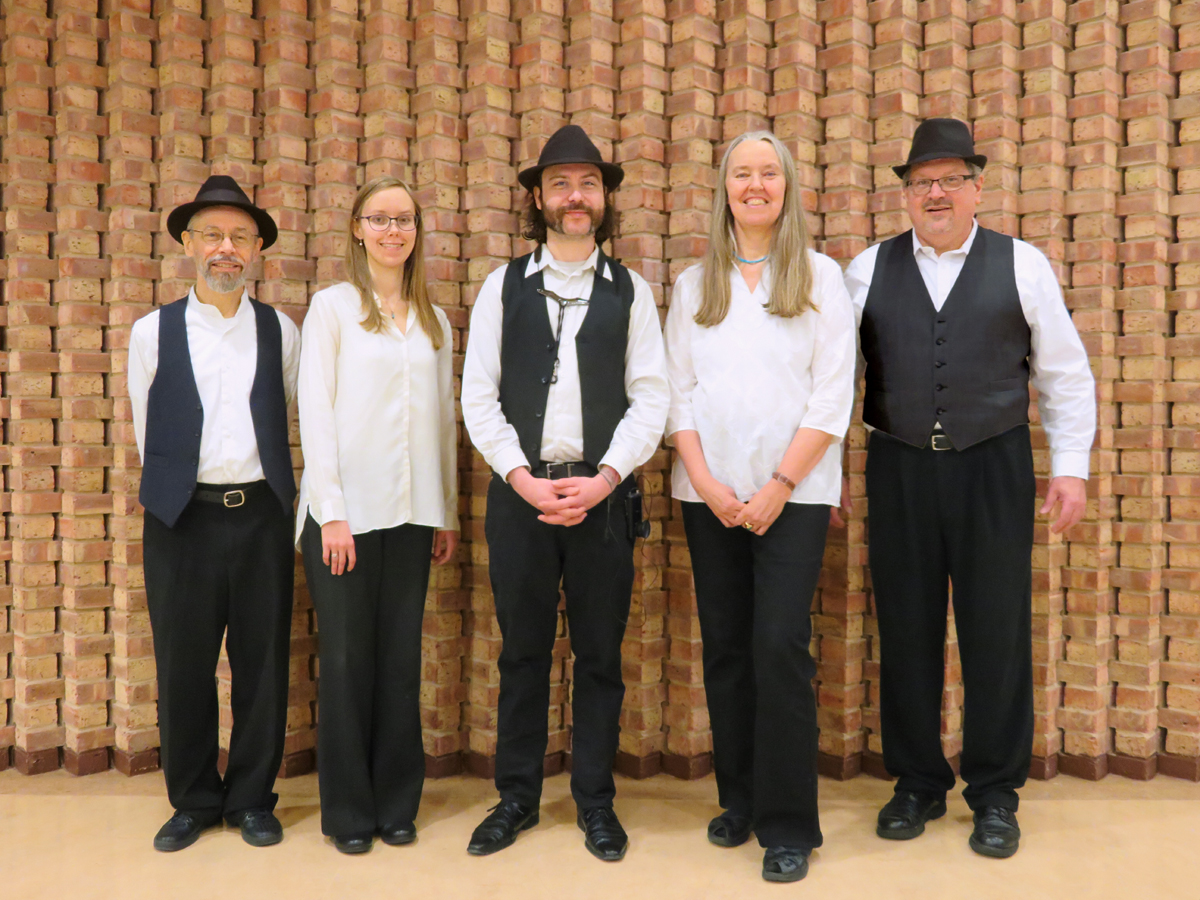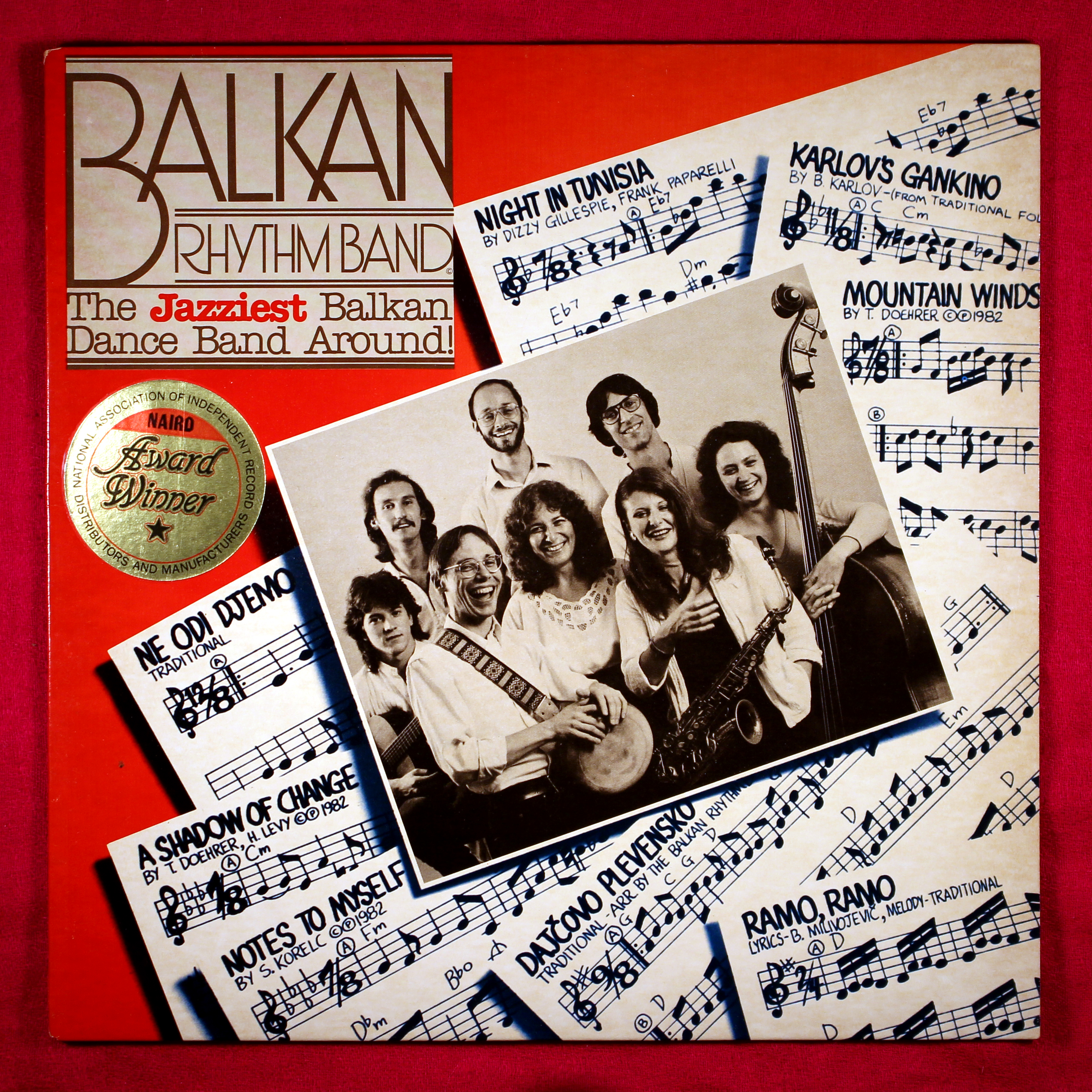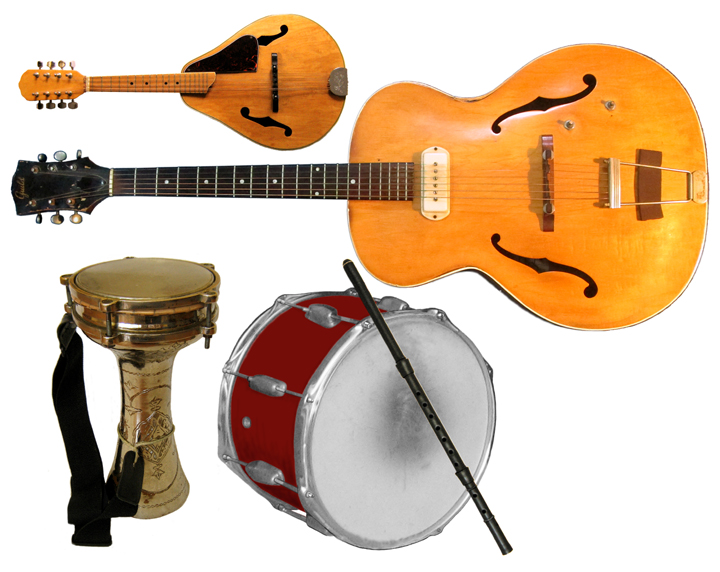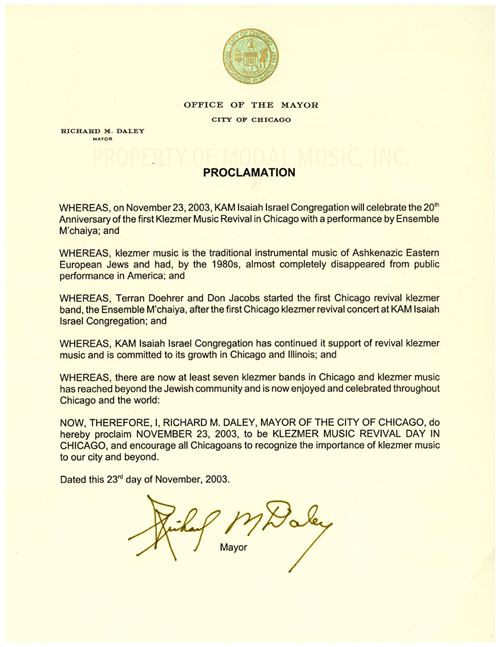
Band Bio
Who we are, where we came from, why we play what we play
What is Klezmer?
Today, most people are unaware of Klezmer’s history. Moreover, most have no idea that it came into its own as a musical style in America. The very term “Klezmer”, derived from Hebrew words for vessel (kle) and song (zemer), was created by young American musicians to define what they were discovering in the dusty nooks and crannies of Yiddish culture’s remnants because the style of music had functionally died out in America by the mid-1960s. Why it faded nearly into oblivion is a very complex cultural question beond the scope of this Band Biography.
Our role in the Klezmer Revival
In 1982 Terran Doehrer heard a concert in Chicago by the Klezmorim, a West Coast band that was part of the “First Wave” of the Klezmer Revival. He realized that the music clearly had some of its roots in the Balkan region of South Eastern Europe and recognized this fact because he already played Balkan music in his ground-breaking, award-winning band, the Balkan Rhythm Band (tm), which he had founded in 1980.

Terran immediately started researching this great music by listening to old 78 RPM and 33 RPM “LPs” records he discovered in second hand shops and in the tents of Skokie, Illinois’ annual Mammoth Music Mart, a now-defunct fund-raiser for ALS. The waves of Jewish immigrants who came to America from Eastern Europe beginning in the 1880s brought their music with them and, luckily, the invention of the phonograph coincided with their arrival.
He set about transcribing tunes and refined his Klezmer style. “For years I spent hundreds of dollars each year and built up a library of sound,” Doehrer says. “One of the things that inspired me was the sound of the old 78s. Forget the scratches — you are listening to the true documentation of an event and something really cool was going on back then, musically speaking.”
What makes Klezmer Klezmer?
What particularly attracted Doehrer to Klezmer was its intense emotion and expressivness. It has the ability to make people cry and laugh at the same time. After all, music is catharsis. It is designed to make you feel things, to fall in love. It’s a physical thing. Doehrer recalls that “the stuff we were hearing in those 78s records does all that. It is intense stuff. The scales evoke both joy and pathos at the same time.”
Klezmer has identifiable characteristics. Among them are recognizable rhythm patterns, melodies shaped by the intervals and modalities of the Middle East and places farther East, as well as ornamentation derived from cantorial singing styles including the turn of a note to sound like wailing or weeping. To the Western ear, Klezmer sounds exotic with scale intervals of half step, step and a half, half step, all floating, somewhat unexpectedly, on top of major and minor chords.
A typical Klezmer rhythm resembles the accented refrain “Washington, Washington, Walla.”
Starting the groove
By January 1983, he was ready and founded the Ensemble M’chaiya (tm). At the time, it was the first and only professional Klezmer band in Chicago. As such, being a pretty much unknown style, it was a little hard to sell to younger Jews. “We had to educate folks,” Doehrer said, “we had to explain that we’re all about Jewish tradition, that we were not playing rock or swing,” the things people commonly asked for at parties in the ’80s.”
As his band played for more and more parties and events, Doehrer observed that audiences really responded to this unusual music. “A lot of the people who hired us were those who had heard it at their bar mitzvahs, and they were thankful we were bringing it back,” he said.
Today, there are more than a dozen professional bands in Chicago and the style is now an international phenomena.
What happens during a revival?
“One of the amazing things about Klezmer is how many ways folks have shaped it and reshaped it since those early days of the Revival,” says Doehrer. “The Ensemble M’chaiya has taken a very dance-oriented approach with a strong dose of Balkan coloration and instrumentation.
‘M’chaiya,’ comes from the root form of ‘chai’ which means ‘life’. Essentially our name means ‘live-giving, full of joy’ and we want folks to dance and have a life-giving cathartic experience. … We do everything we can to live up to our name,” says Doehrer and the group makes sure of that by getting folks singing, dancing, and drumming along.
However, the Ensemble M’chaiya has never been bound by tradition and created its own distinct spin on Klezmer, starting with its instrumentation which includes the Kaval, a Bulgarian end-blown flute, Tupan and Darabuka (Balkan percussion), Violin, and Mandolin.

This Balkan-inspired direction found further impetus when Terran subsequently encountered Sephardic music which directly uses those instruments. The style was preserved by the Jews who were forced to leave Spain in 1492 ending up in places like Bulgaria, Greece, and Turkey. In addition to speaking “Ladino” (basically 500-year-old Spanish with a healthy admixture of Hebrew), the Sephardim also speak French and Turkish as well as various Slavic languages.
“Klezmer was never cartoon music,” Doehrer cautions. For almost a century, it was the contemporary dance music and he encourages everyone to get inside the reality that Klezmer is a living, vital thing despite nostalgic fantasies like Marc Chagall’s floating fiddlers on the roof.
The band’s natural market is the Jewish community and it performs for weddings and bar mitzvahs as well as touring across America and Europe to perform at folk festivals and general audience concerts.
Honored for our contribution to culture
In recognition of Evanston-based Ensemble M’chaiya’s contribution to Chicago’s cultural life as the area’s first Klezmer band, on its 20th anniversary, then-Mayor Richard Daley proclaimed November 23rd as Klezmer Revival Day in their honor.

Our growth is fueled by the quality of our live performances. Generally, over half of our business is with repeat clients! People hire us repeatedly because they know we provide them with flexible, high quality, family-friendly professional entertainment. And, of course, it helps that we present our music in as an acoustic manner as possible in any given performance situation. Add on our efforts to include the audience in the fun by getting them up and dancing and percussing along with us, and you have the Ensemble M’chaiya story: good music, good players, and responsive, friendly, interactive entertainment.
We will keep you posted about new and exciting events around town. And while you are at it, please let us know what you think about our web site, our mission, and our music! We appreciate your comments and interests. And, of course, please spread the word about us so that others can get involved.